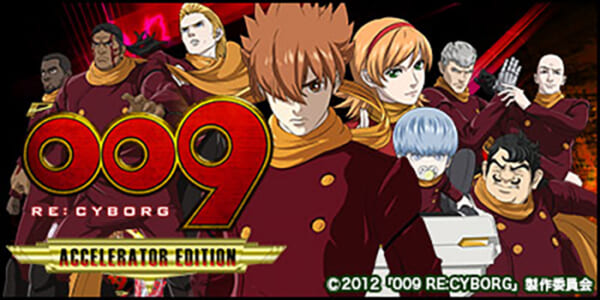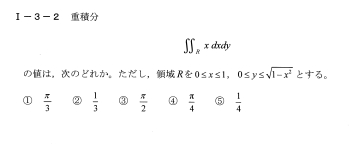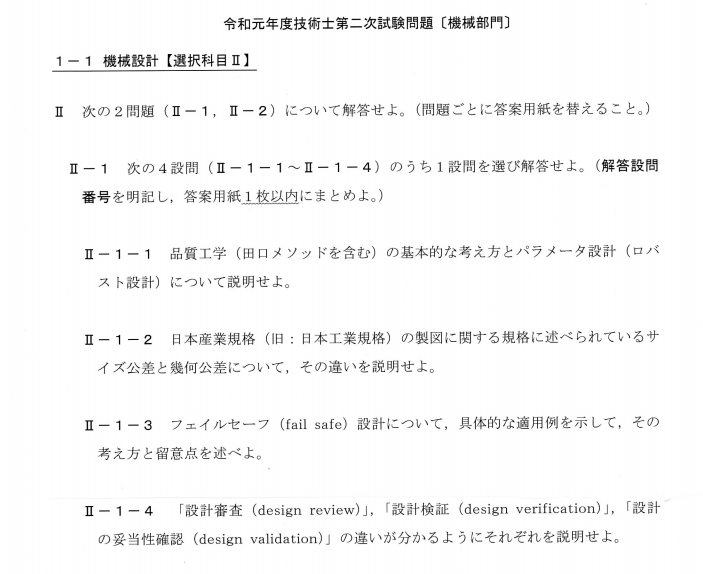[GPT3による要約]
この記事では、対立や摩擦が、実際には人間関係においてどのように有益なものになりうるかを論じています。著者は、対立が多いカップルは、対立が少ないカップルよりも自分たちの関係に満足する傾向があることを示す研究を引用しています。著者はまた対立がどのようにカップルを成長させ、彼らの関係を改善するのを助けることができるかを議論します。
ブロックチェーンを使って、対立、摩擦、挑戦、そして冒険を生み出す。Diablo 2 Resurrected」「Leeroy Jenkins」「Star Atlas」。
Jon LaiのInstant Gamesを覚えていますか?ここにハードコア・ゲームズがある。
インスタントゲームが摩擦のないゲームなら、ハードコアゲームは摩擦だらけのゲームだ。そして、摩擦が潜むところにチャンスが生まれる。
ブロックチェーンは、リスクテイクに報いるゲームを再び作り始め、プレイヤーや開発者に高揚感、栄光、勝利のチャンスを提供する、非常に現実的なチャンスを私たちに与えてくれます。どのように?
紛争、摩擦、そしてデジタルの希少性。
摩擦の賛美。Diablo II Resurrected(ディアブロ・ツー リザレクション
8月のベータ版早期アクセスの週末、私はDiablo II: Resurrectedを広範囲に渡ってプレイしていました。このような純粋なゲーム進行の感覚は、久しぶりでした。
パラディンをゼーロットとしてAct IとII(リリースされた唯一のAct)を通してレベルアップさせた。ティルやエルと一緒にルーンワード「鋼」を作るために2ソケットのサーベルを探した。
ゲームに参加し、交流し、Tal Runeを物々交換してStealthのルーンワードを完成させ、Hammerdinに変え、Blizzard Sorceressesに(何度も)プレイヤーキルされ、28%のMF Nagelringに熱狂するグループを目の当たりにしたのです。
これはゲームの「ベータ版」に過ぎず、5つの幕のうち2つしか用意されていませんでした。でも、その制約があるからこそ、もっともっと......おもしろかった。
このact1-2のメタゲームにおいて、どのLootに価値があり、どのLootに価値がないのか」についての理解が深まることに喜びを感じたのです。戦利品が少なく、取引の機会もほとんどない新しいゲームでした。
せっかく結成したTombs-08という集団を崩壊させるような危険なゲームだった。
それまで低レベルのルーンワードに注目したことはありませんでした。『Diablo 2』のマルチプレイができる年齢(8歳)になると、周囲に「ラッシュ」(早くレベルを上げる)してくれる人たちがいました。新しいプレイヤーのためにユニークな戦利品を落としてくれる「無料」ゲームにも参加しました。
d2jsp1も、戦利品生産ボットも、オークションハウスも、こうした摩擦を緩和するものはありませんでした。プレイヤーは自分で道を切り開くしかなかったのです。それはそれで楽しいものです。
すべてのゲームに摩擦が必要なわけではありません。そしてバランス的には、摩擦が少ないことは素晴らしいことです。私は、DotA 2のキューに入り、同じようにマッチングされたライバルたちと30秒でゲームに参加できることが好きです。(でも、負けたときは、確かに不公平ですよね)。
冗談はさておき、摩擦を加えることは、ある種のビデオゲームでは効果的です -- 本当に、それはあなたを記憶させるものです。ストーリーや人生の教訓、冒険を生み出します。強調するのです。ハンガー(とイカ)ゲーム」が説得力を持つのは、そのためです。
ビデオゲームの緊張の瞬間が、それを作っているのです。Diablo』のブッチャーに何度も何度も殺されるようなものです。レベルスカルスの敵に死んだ後、タナリスを横切って走る死体。レイドでスヴェン・スヴェンソン(『RimWorld』で初めてパーマデスに負けた)を失ったこと。(ハードコアゲーム)
Edit 11/10/21: Diablo II: Resurrected on Hardcoreでレベル78のアサシンをレベル79になる直前のAct 5 of HellでVile Lancersに負けたこと。(ため息)
Games as Engines for Learning
Raph Koster, game designer of Ultima Online, suggested helpfully: games are opportunities for education: a chance to teach and to learn. You're learning new systems & models when you engage with a game, and you're flooded with dopamine for it. Above, I learnt not to underestimate ‘fodder monsters’ - Vile Lancers.
But oh, what a joy mastery can be! When you effortlessly execute a multi-pronged attack in Starcraft II, or when you coordinate a 378,012 USD battle in Eve Online, or successfully corner the early-expansion market on your World of Warcraft server... (s u p e r n o r m a l p r o f i t s)
I have confidence that blockchain will help bring and unlock the next era of scarce, dynamic gameplay: where players learn to negotiate amongst themselves, figure out crafting systems, engage in roleplay, sabotage, handle questions of land ownership. Some of the most ambitious games will even surface problems of logistics and managing the supply-chain.
These games will be the next generation of blockchain games. They will build full fledged virtual economies and systems, and introduce friction and conflicts of human values in order to create continually engaging gameplay.
In fact, Diablo 2: Resurrected is precisely this: where players wheel and deal on Discord, d2jsp and other sites.
d2JSP is an entire business that was built on settling item trades. There’s issues raised in the video above: items poofing, in-game economy, bots… that will give enough challenge to any prospective play-and-earn game designer.
As we know, blockchain helps mitigate items ‘poofing’ (as all items created are traceable). It also outsources all of that work of ‘trusting the other player to give you the money / forum gold’ onto smart contracts.
Cool, huh?
So yes, RE: the next generation of blockchain games: I have some idea of what games like that look like. Some of them will look like Diablo 2: giving players interesting choices.
“Players early on in the ladder can make a choice as to whether to give up their hard-earned items for more forum gold, when its more scarce, as opposed to later on when you’ll have to beg someone to take a Shako off your hands.” — Coooley, paraphrased
Ironically, it is friction that will provide players multiple roles in a play-and-earn economy, which are also player-driven economies.
If every stat is streamlined and comparable, then no one new will wish to play. (cf constant player complaints about classes feeling the same in WoW).
If everyone already knows what's the best thing to do in-game, there's no learning to be done.
Community Derives from Conflict and Friction
These days, I find myself wary of games that provide too quick and too easy a progression: selling everything upfront - legendaries. Star Cards2, and L60 boosts.3 Call it the shifting time preferences of gamers, sure.
But there’s a tradeoff. You see, when one gives everything away too easy, then no one in-game has a chance to accrue status for their skill and knowledge.
There's no time for a community to coalesce, for rivalries, wikis, guilds and friendships to form. People need to come together to solve SOME problem. Even if it is the problem of bashing down The Lich King, so they can get their loot already.
Perfectly Imperfect Information
In CryptoRaiders, the team made a decision to not release how statlines affect combat in their combat dungeon. Of course, how stats work is encoded in the game model… so that friction was a design choice.
Do you remember Game Wikis? Here’s what I get for googling “Diablo 2 Enigma”.
Someone did this. Some player set up a Wiki in order to make pages for every single runeword.
In an Instant World, you’d expect to be able to Google ‘how to do this’ and solve these problems.
But in a ‘Hardcore’ one, it’s your role, in the game, to go and figure it out. Share your victories and successes, which are valuable precisely because they are hard-won through your effort.
Now, you get to be on the ground floor and building up that repository of knowledge for other players, and your player model of the world.
That is your challenge, if you choose to accept it.
Your reward? Status, a sense of accomplishment, and the sense of contributing to a community larger than oneself.
And when one achieves things too easily, one doesn't cherish it too much.
The central criticism of Madseason is that Activision Blizzard has failed to ‘put gameplay first’. Engagement drives revenue & not the other way around.
This is the critical role of game designers & game economy designers: to ensure that a game remains viable to play, over, and over and over again, and to manage the expectations of a community, who has faithfully supported the game for years.
To develop systems that players find compelling, meaningful, that are cohesive and coherent with the intended world, and finally, to introduce new, lifechanging concepts to people along the way. (No pressure!)
Imagine: 10 years from now, a whole generation will have grown up learning about true digital ownership from games like Axie Infinity and Star Atlas.
When that generation plays similar games, they won't want anything less from their economies. The frictionless world offered us infinite land, and infinite resources. Digital scarcity via the blockchain has a potential to restore that friction to games — with limited amounts of resources, that players can fight over — conflict.
学習エンジンとしてのゲーム
Ultima OnlineのゲームデザイナーであるRaph Koster氏は、「ゲームは教育の機会であり、教えるチャンスであり、学ぶチャンスである」と提言しています。ゲームに関わることで、新しいシステムやモデルを学び、ドーパミンが放出されるのです。上記のように、私は「餌となるモンスター」であるVile Lancersを過小評価しないように学びました。
しかし、ああ、マスターベーションはなんと楽しいことだろう。Starcraft IIで多方面からの攻撃を難なくこなしたとき、Eve Onlineで378,012ドルの戦闘を調整したとき、World of Warcraftサーバーで早期拡張市場を成功させたとき...(S u p e r N o r m a l p r o f i t s )。
ブロックチェーンは、希少でダイナミックなゲームプレイの次の時代をもたらし、その扉を開くのに役立つと確信しています。プレイヤー同士が交渉し、クラフトシステムを考え、ロールプレイを行い、妨害工作を行い、土地所有権の問題を扱うことを学ぶ場です。最も野心的なゲームでは、物流やサプライチェーンの管理といった問題まで表面化することになるでしょう。
このようなゲームは、次世代のブロックチェーンゲームとなるでしょう。本格的な仮想経済やシステムを構築し、摩擦や人間の価値観の対立を導入することで、継続的に魅力的なゲームプレイを実現するのです。
実際、「Diablo 2: Resurrected」はまさにこれであり、プレイヤーはDiscordやd2jspなどのサイトで輪を広げて取引します。
d2JSPは、アイテムトレードの決済で成り立っているビジネスなんです。上の動画では、アイテムの偽装、ゲーム内経済、ボット...といった問題が提起されており、これからプレイ&アーニングゲームを作ろうとするデザイナーにとっては、十分なチャレンジとなるはずです。
ご存知のように、ブロックチェーンはアイテムの「なりすまし」を軽減するのに役立ちます(作成されたすべてのアイテムが追跡可能なため)。また、「他のプレイヤーがお金やフォーラムゴールドをくれることを信じる」という作業をすべてスマートコントラクトにアウトソースします。
かっこいいでしょう?
そうそう、RE: 次世代のブロックチェーンゲームです。私は、そのようなゲームがどのようなものであるか、ある程度わかっています。Diablo 2のように、プレイヤーに面白い選択肢を与えるようなゲームも出てくるでしょう。
"ラダーの序盤のプレイヤーは、より希少なフォーラムゴールドのために、苦労して手に入れたアイテムを手放すかどうかの選択をすることができます。" "後期になると、誰かに頼んでシャコを引き取ってもらうことになるのとは対照的です。" - クーリー、言い換え
皮肉なことに、プレイアンドアーンの経済においてプレイヤーに複数の役割を提供するのは摩擦であり、それはプレイヤー主導の経済でもあるのです。
もし、すべてのステータスが合理化され、比較可能であるならば、新しい人は誰もプレイしたいと思わないでしょう。(cf WoWでクラスが同じに感じられることに対する絶え間ないプレイヤーの不満)。
もし、誰もがゲーム内で何をするのがベストなのかを既に知っているならば、学ぶ必要はないのです。
コミュニティは、対立と摩擦から生まれる
最近、私は、あまりにも早く、あまりにも簡単な進行を提供するゲームに警戒心を抱いています。レジェンダリー、スターカード2、L60ブースト3。
しかし、これにはトレードオフがあります。つまり、あまりにも簡単にすべてを提供してしまうと、ゲーム内の誰も自分のスキルや知識に応じたステータスを得る機会がなくなってしまうのです。
ライバル、Wiki、ギルド、友情など、コミュニティが形成される時間がないのです。人々は何らかの問題を解決するために集う必要があります。たとえ、それがリッチキングを倒して戦利品を手に入れるという問題であっても。
完璧に不完全な情報
CryptoRaidersでは、戦闘ダンジョンにおいてステータスが戦闘にどのように影響するかを公開しないことを決定した。もちろん、ステータスがどのように機能するかはゲームモデルにエンコードされているので、その摩擦はデザイン上の選択だった。
Game Wikisを覚えていますか?Diablo 2 Enigma」でググると、こんな感じです。
ある人がこんなことをしました。あるプレイヤーは、ラノベのページを作るためにWikiを立ち上げました。
インスタントな世界では、「どうすればいいか」をググって解決することができると思うでしょう。
しかし、ハードコアの世界では、それを解決するのはゲームの中のあなたの役割です。自分の努力で勝ち取ったものだからこそ価値がある、その勝利や成功を共有する。
そして、他のプレイヤーのために知識の宝庫を築き、世界のプレイヤーモデルを構築するのです。
それがあなたの挑戦であり、あなたがそれを受け入れることを選択した場合。
報酬は?地位、達成感、そして自分よりも大きなコミュニティに貢献しているという感覚。
そして、あまりにも簡単に物事を達成すると、人はそれをあまり大切にしなくなります。
Madseasonの批判の中心は、Activision Blizzardが「ゲームプレイを第一に考える」ことに失敗したことです。エンゲージメントが収益を上げるのであって、その逆ではありません。
これは、ゲームデザイナーとゲームエコノミーデザイナーの重要な役割です。ゲームが何度も何度も繰り返し遊べるようにし、何年もゲームを忠実にサポートしてきたコミュニティの期待に応えることです。
プレイヤーにとって魅力的で意味のあるシステムを開発し、意図された世界と一致するような、そして最後に、人生を変えるような新しい概念を人々に紹介することです。(無理は禁物です!)。
想像してみてください。今から10年後、ある世代が「Axie Infinity」や「Star Atlas」といったゲームから真のデジタル所有権について学んで育っていることでしょう。
その世代が同じようなゲームをプレイするとき、彼らは自分たちの経済に対してそれ以上のものを求めないでしょう。摩擦のない世界は、私たちに無限の土地と無限の資源を提供しました。ブロックチェーンによるデジタルの希少性は、ゲームにその摩擦を取り戻す可能性があります。限られた量の資源で、プレイヤーは争うことができます。
Conflict as a Driver of Emotion and Narrative
Conflict drives emotion, and the reason why players play a game is to feel an emotion. Conflict drives narrative, too.
“Yeah mate, I was like, flying my attack ship, the Ogrika Thripid, and I like had these like 20 fellow co-pilots around me, when we got ambushed by like a capital ship dude.
But like I had a person on the inside of their capital ship, lol so I knew they were coming so it was actually like a reverse ambush. So we boarded their capital ship and totally jacked it lol. We split the 30k winnings amongst the 20 of us easy earnings. Best raid ever. He threatened us over voice and then I killed his pilots lol” - some 15 year old kid playing Star Atlas in the future, probably.
Alright Chums up, let’s do this.
There’s your conflict of human values: “Life vs death. Victory vs defeat. Love vs hate. Have vs not have.”4 These are the dominant values in games today.
I hope Star Atlas with its proposed high-risk, high-reward gameplay & territory mechanics, will be a shining example of that when they launch, and help the next generation come up with similar epic stories.
At bottom, a game is a work of art -- a system that a developer designs, and hands off to the players. So, please, make a beautiful artwork that brings people joy as it unfolds. I'd love to play it. Just remember to bring your community on the upside of that ride too.
In closing, I'd like to share a piece I wrote back in 2019, pontificating on Hardcore Games and the 'weight', and subsequent satisfaction, of difficult video games. (https://ryanfoo.com/hardcore-games/)
Post Script: It’s Dangerous to Go Alone, bring some PALS FOR LIFE
I’ve recently joined KERNEL KB4, and we’re taking on the adventure of investigating Play-and-Earn games and developing principles for designing them (well).
Here’s a signal boost to the people I think are doing great work in this space:
Michael Martin released an awesome newsletter (CryptoGameBites), written in a punchy, digestable style that will keep you informed, updated and ready to rock with blockchain games.
Arianna Simpson appeared on Bankless and spoke on crypto-gaming, and how its going to be the ‘unlock’ that ushers in many, many more users of crypto.
If you’re working on a play-and-earn game, or trying to puzzle some things out about this space, I’m happy to chat with you. Reach out to me on Twitter: @0xRyze
1
A Diablo 2 items trading site, where players use Forum Gold as an intermediary currency.
2
Star Wars BattleFront.
3
Instant Boost in WoW: Burning Crusade.
4
https://www.gamedeveloper.com/design/human-values-in-game-design---an-approach-for-designing-emergent-storytelling
感情と物語の原動力としてのコンフリクト
プレイヤーがゲームをプレイする理由は、感情を感じるためです。コンフリクトは物語を生み出す原動力にもなります。
「オグリカ・スリピッドという攻撃機を操縦していて、周りに20人くらいの副操縦士がいたんですが、巨大な船の野郎に待ち伏せされたんです。
でも、相手の船の内側に人がいて(笑)、彼らが来るのがわかっていたので、逆アンブッシュのような形になりました。で、相手の船に乗り込んで、完全にやっつけました(笑)。30kの賞金を20人で山分けした。最高のレイドだった。彼は音声で私たちを脅し、私は彼のパイロットを殺しました(笑)". - 未来のスターアトラスをプレイしている15歳の子供、たぶんね。
よし、仲良しこよし、やろうぜ。
人間の価値観の対立がありますね。「生か死か。勝利 vs 敗北。愛と憎しみ。生と死、勝利と敗北、愛と憎しみ、持つことと持たざること」4 これは、今日のゲームにおける支配的な価値観です。
ハイリスク・ハイリターンのゲームプレイとテリトリーメカニズムを提案するStar Atlasが、発売されればその輝かしい見本となり、次の世代が同じような壮大なストーリーを考え出すきっかけになればと願っています。
ゲームとは、開発者が設計し、プレイヤーに渡すシステムであり、芸術作品である。だから、ぜひ、展開が楽しい、美しい作品を作ってください。私はそれをぜひプレイしたい。ただ、その際には、コミュニティも一緒に盛り上げてあげてください。
最後に、2019年に書いた、ハードコアゲームと、難しいビデオゲームの「重さ」、そしてその後の満足度についてポンッと書いた文章を紹介したいと思います。(https://ryanfoo.com/hardcore-games/)
ポストスクリプトです。一人で行くのは危険、PALS FOR LIFEを何人か連れてこい
最近、KERNEL KB4に参加し、Play-and-Earnゲームを調査し、それをデザインするための原則を開発するという冒険に挑んでいます(よくあることです)。
この領域で素晴らしい仕事をしていると思う人たちに、シグナルを送ります。
マイケル・マーティンは、パンチの効いた消化しやすいスタイルで書かれた素晴らしいニュースレター(CryptoGameBites)をリリースし、ブロックチェーンゲームに関する情報、アップデート、ロックへの準備を怠らないようにします。
アリアナ・シンプソンはBanklessに出演し、暗号ゲームについて、そしてその暗号がいかに多くの暗号のユーザーを導く「鍵開け」になるかを話しました。
もし、あなたがプレイ&アーンのゲームに取り組んでいたり、この領域についていくつかのことを解明しようとしているなら、私は喜んであなたとお話しますよ。Twitterでご連絡ください。0xRyze(アットマークライズ
1
Diablo 2のアイテム取引サイト。プレイヤーはフォーラムゴールドを仲介通貨として使用する。
2
Star Wars BattleFrontのこと。
3
WoW: Burning Crusadeのインスタントブースト。
4
https://www.gamedeveloper.com/design/human-values-in-game-design---an-approach-for-designing-emergent-storytelling
おすすめ記事





